Exploring Italian cuisine goes beyond pizza and pasta; the dessert repertoire is just as rich and varied. From creamy confections to delicate pastries, Italian desserts offer a delightful end to any meal. Each treat reflects Italy’s diverse regional flavors and culinary traditions.
What makes Italian desserts special? They often focus on fresh, simple ingredients, creating flavors that are both authentic and irresistible. Whether you’re craving something light or indulgent, there’s an Italian dessert to satisfy your sweet tooth. You’ll discover classics and hidden gems that capture the essence of Italian culture and craftsmanship.
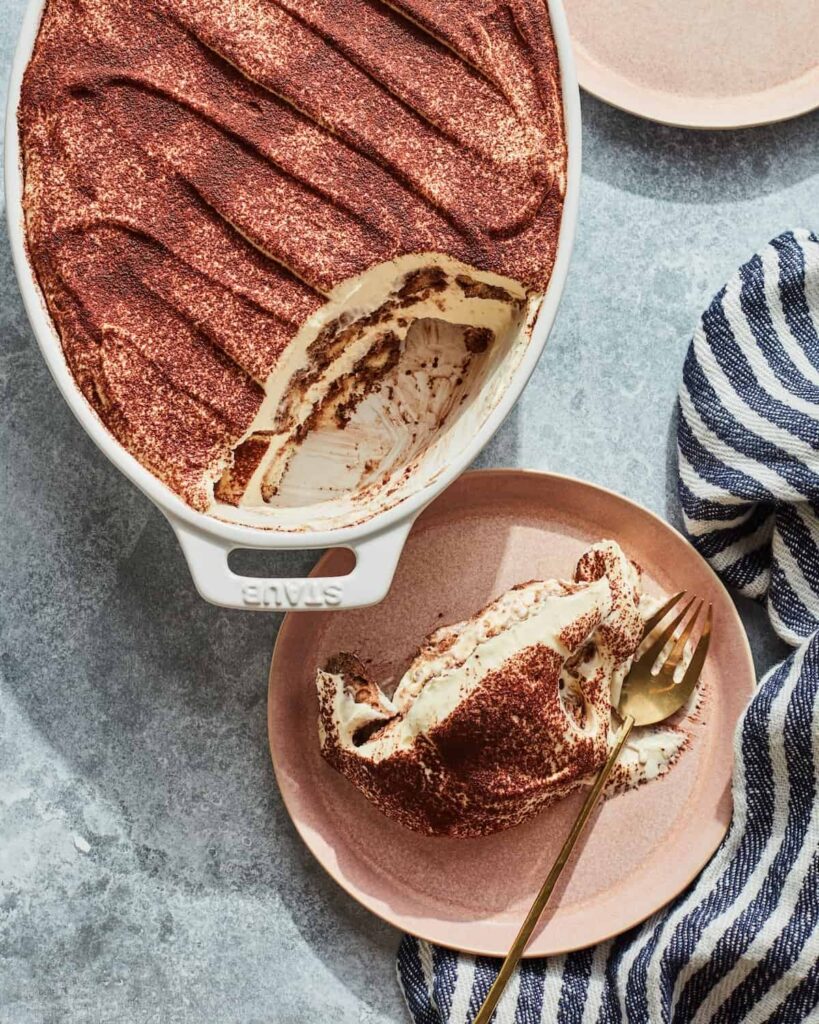
1) Tiramisu
Tiramisu is a beloved Italian dessert known for its layers of flavor and creamy texture. This classic treat features espresso-soaked ladyfingers and a rich mascarpone cream.
To make tiramisu, start by preparing a strong espresso. Quickly dip ladyfingers in the coffee and layer them in a dish. Don’t soak them too long or they might get soggy.
In a mixer, whisk egg yolks and sugar until creamy. Then blend in mascarpone cheese until smooth. Gently fold in whipped cream or beaten egg whites to create a light filling.
Alternate layers of dipped ladyfingers and mascarpone cream in your dish. Finish with a dusting of cocoa powder on top. Let the tiramisu chill in the fridge for a few hours.
Tiramisu is perfect for entertaining or special occasions. It can be made ahead of time, allowing flavors to meld beautifully. Whether you serve it in a large dish or individual portions, tiramisu is sure to impress.
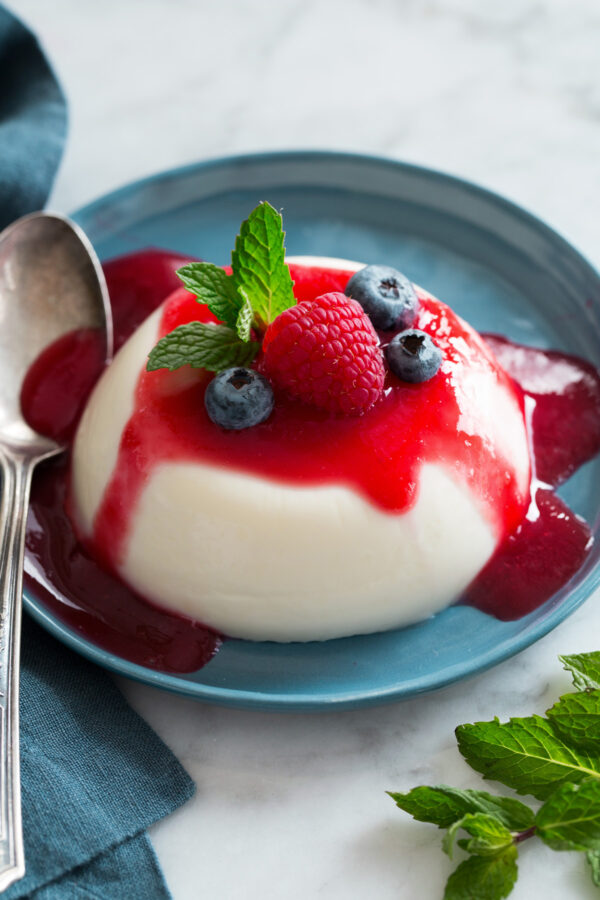
2) Panna Cotta
Panna Cotta is an elegant and simple Italian dessert made from sweetened cream thickened with gelatin. It’s often flavored with vanilla and served with a fruit sauce.
To make Panna Cotta, you start by softening gelatin in cold water. Meanwhile, heat cream, sugar, and vanilla in a saucepan until the sugar dissolves.
Remove from heat and stir in the softened gelatin until fully dissolved. Pour the mixture into ramekins or glasses and let it cool. Refrigerate until firm, usually for several hours or overnight.
For a classic touch, serve Panna Cotta with a berry sauce. You can make this by blending fresh berries with sugar and lemon juice until smooth. Drizzle the sauce over the set Panna Cotta before serving.
This dessert has a creamy and smooth texture, making it a favorite for many. It’s a versatile dish that can be flavored in various ways, depending on your preferences.

3) Cannoli
Cannoli is a popular Italian dessert that originates from Sicily. These pastries have a crisp, tube-shaped shell, typically made from fried dough. Inside, you’ll find a sweet and creamy filling, usually made from ricotta cheese.
To make the shells, mix flour, sugar, egg, milk, vegetable oil, and red wine to form a dough. Roll out the dough until thin, then cut it into circles. Wrap the circles around metal tubes and fry them until golden brown.
The filling is important. Combine ricotta cheese with powdered sugar, mixing until smooth. Add chocolate chips or candied fruit for extra flavor. Once the shells have cooled, pipe the filling inside.
You can finish the cannoli with powdered sugar on top. Some like to add a slice of candied orange or a few chocolate chips for decoration. Serve immediately to keep the shells crunchy.

4) Gelato
Gelato is a beloved Italian dessert that you must try. It’s similar to ice cream, but denser and creamier. Gelato is made with more milk and less cream, which makes it lower in fat than traditional ice cream. Some recipes also use egg yolks, giving it a rich, smooth texture.
Gelato often has a more intense flavor than ice cream. This is because it contains less air. Its slow-churned process creates a thick, luxurious treat. When you take a bite, you’ll notice that the flavors are more pronounced and vibrant.
You can find gelato in a wide variety of flavors. Classic options include chocolate and vanilla, but there are also unique choices like pistachio, hazelnut, and stracciatella. Many gelaterias use fresh, high-quality ingredients to create these delightful tastes.
When visiting Italy, stopping by a gelateria is a must. Gelato is typically served at a slightly warmer temperature than ice cream, which helps maintain its creamy consistency. Enjoy it in a cone or a cup, and savor each delightful spoonful.
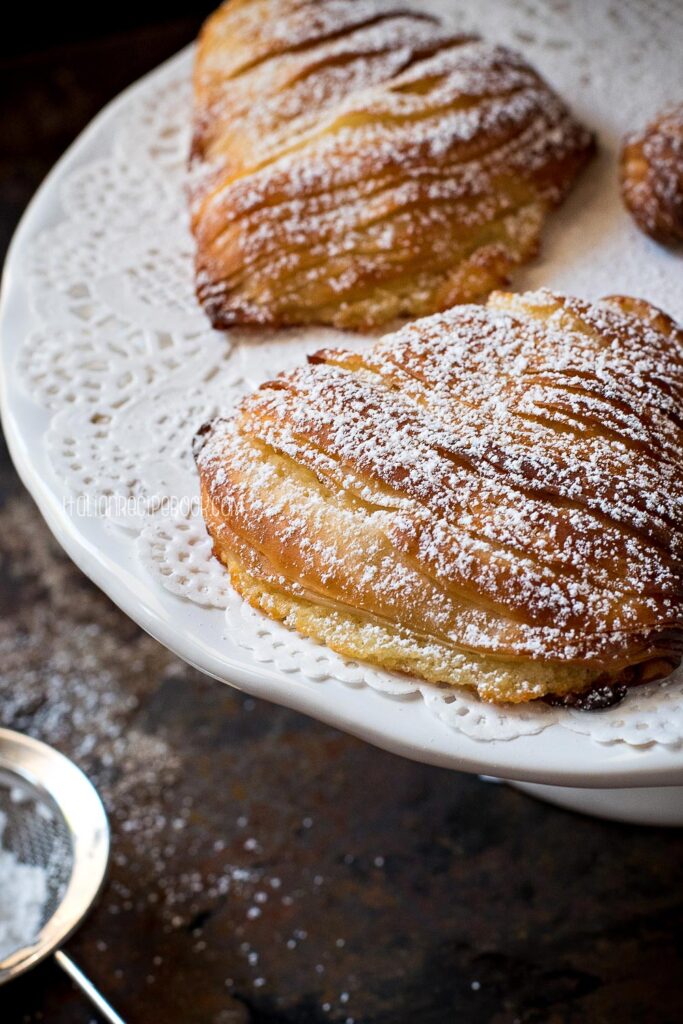
5) Sfogliatella
Sfogliatella is a traditional Italian pastry known for its distinct, layered texture and delicious filling. Originating from Naples, this dessert is often enjoyed with coffee.
The dough for sfogliatella is made by kneading together flour, water, and a bit of salt until smooth. After resting in the fridge for about 30 minutes, the dough is rolled thin using a pasta machine.
Each piece of dough is then shaped into a cone. The filling, usually a blend of semolina, ricotta, sugar, and sometimes citrus peel, is placed inside. The pastry is then sealed and placed on a baking sheet.
Baking takes place in a preheated oven at 400°F (200°C) for 20-25 minutes until golden brown. The result is a crispy outer shell with a soft and creamy inside.
Sfogliatella is often dusted with powdered sugar before serving, adding a sweet finish to its rich flavor. Whether enjoyed fresh from the oven or at a local bakery, this pastry offers a delightful taste of Naples’ culinary heritage.
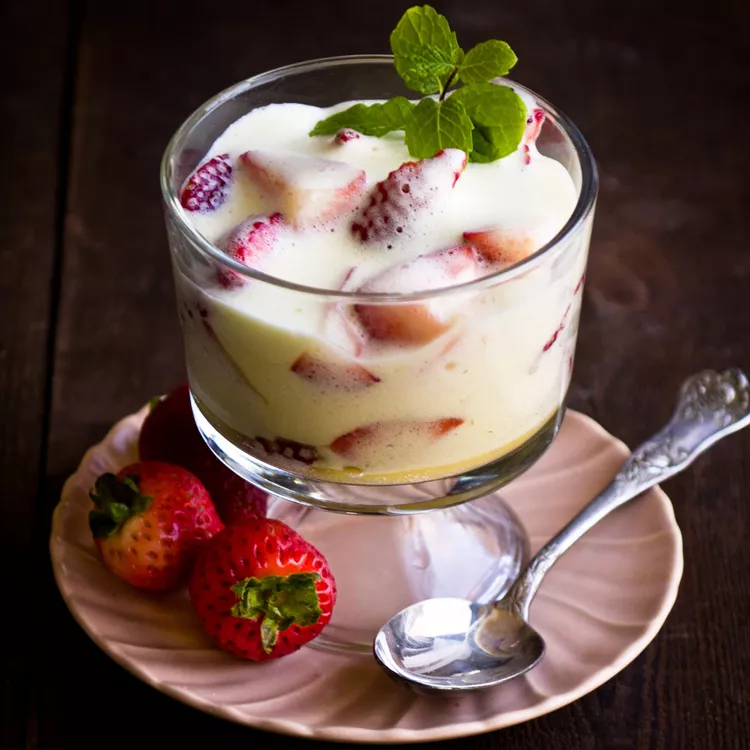
6) Zabaglione
Zabaglione is a classic Italian dessert that dates back to the 16th century. It is a light and creamy custard made with just three simple ingredients: egg yolks, sugar, and Marsala wine. This dessert is known for its delicate texture and rich flavor.
To make Zabaglione, you first whisk egg yolks and sugar until they become pale and thick. It’s important to do this step off the heat to avoid cooking the eggs too quickly. Once the mixture is ready, place it over a pot of simmering water.
While whisking continuously, add the Marsala wine slowly. The bowl should not touch the water. Keep whisking until the mixture doubles in size and thickens to a custard-like consistency. This usually takes about 5-10 minutes.
Zabaglione can be served warm or cold, depending on your preference. You can enjoy it on its own or paired with fresh berries, cookies, or a slice of cake. This dessert is not only tasty but also versatile, making it a favorite in many Italian households.
If you’re looking for a dessert that’s impressive yet simple to make, give Zabaglione a try. It offers a taste of Italy in every bite.
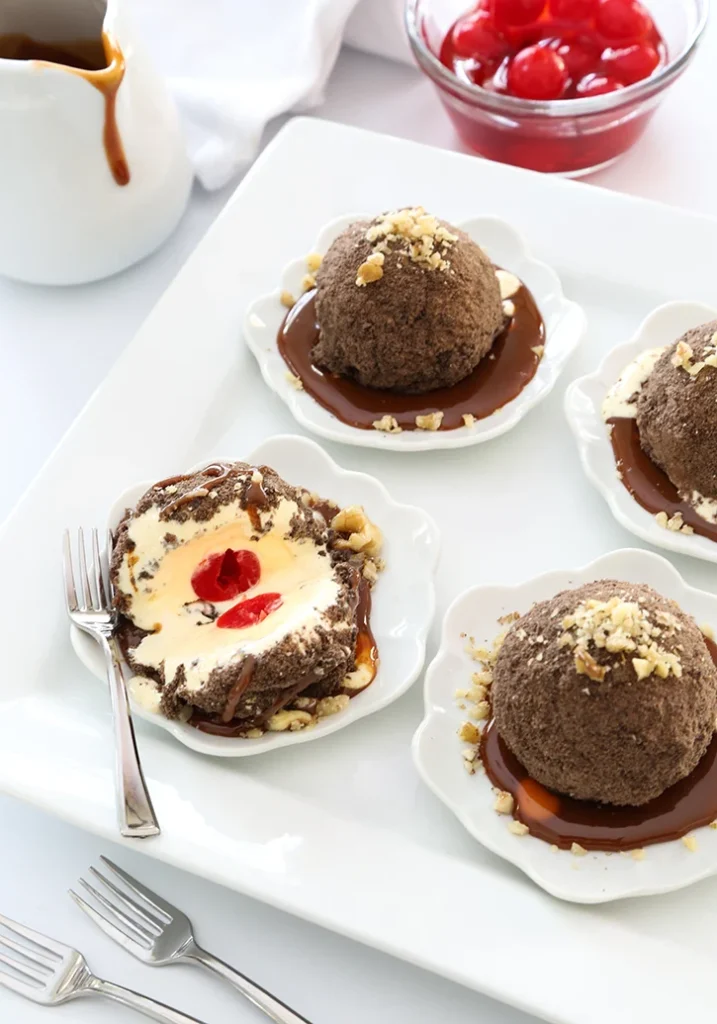
7) Tartufo
Tartufo is a classic Italian dessert that combines ice cream and chocolate. This treat is often enjoyed after a meal or during a celebration.
Originating from the town of Pizzo in Calabria, tartufo means “truffle” in Italian. This name comes from its resemblance to the precious fungus.
To make tartufo, you start with two flavors of ice cream. One common combination is vanilla and chocolate. First, soften the ice creams and form them around a core of nuts or fruit, like a cherry or hazelnut.
Next, freeze the ice cream balls until firm. Once solid, roll them in cocoa powder, crushed cookies, or a chocolate coating. This adds a tasty, crunchy texture to the dessert.
Some recipes also include a layer of chocolate sauce. Pour the sauce over the ice cream to create a rich shell. Let the tartufo freeze again to set the chocolate.
When you’re ready to serve, place the tartufi on a plate and let them soften for a few minutes. This makes the center creamy and easy to bite into. Enjoy this delightful dessert with friends and family.
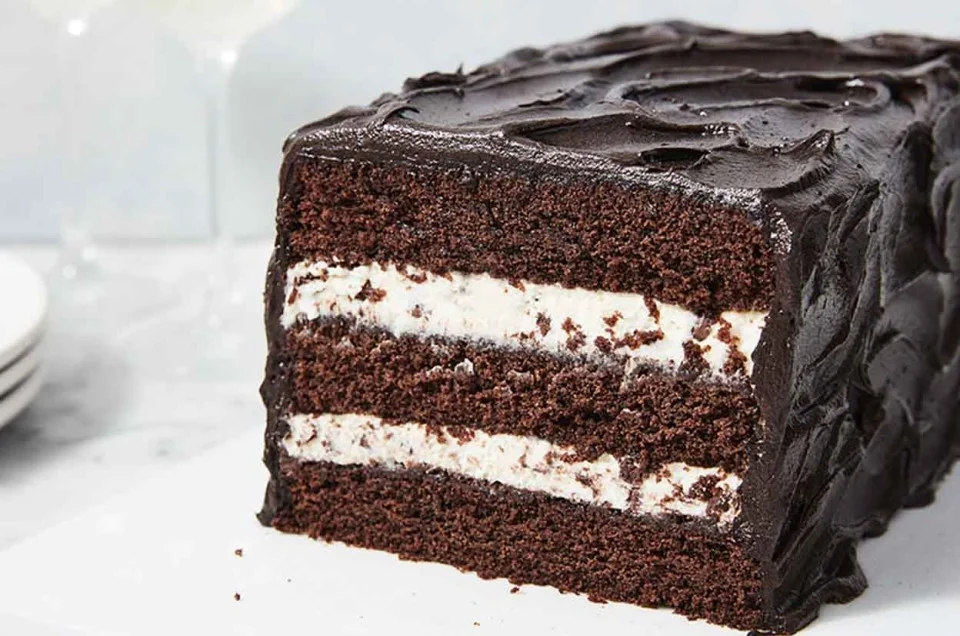
8) Cassata
Cassata is a traditional Italian dessert that originates from Sicily. It is a colorful, layered cake typically enjoyed during festive occasions. The cake is made with ricotta cheese, sponge cake, marzipan, and candied fruit.
To start, you need to let the ricotta dry by wrapping it in paper towels for about two hours. This helps remove excess moisture.
Once the ricotta is ready, you can begin preparing the cake layers. Whip eggs with granulated sugar until the mixture becomes foamy. Add flour, starch, a pinch of salt, and lemon zest to the mixture.
Pour the batter into a buttered and floured baking pan and bake it at 350°F (180°C) until golden. Once baked, let the cake cool before slicing it into thin layers.
Make a syrup with water, honey, and sugar. Brush the cake layers with this syrup to keep them moist.
Next, prepare the filling by whisking the ricotta with powdered sugar until smooth. Mix in chocolate chips and orange zest to add flavor. Spread this filling between the layers of cake.
Assemble the cake, alternating layers of sponge cake and ricotta filling. Finally, cover the cake with marzipan and decorate it with candied fruits.
Cassata is a delightful and rich dessert that beautifully showcases Sicilian flavors.
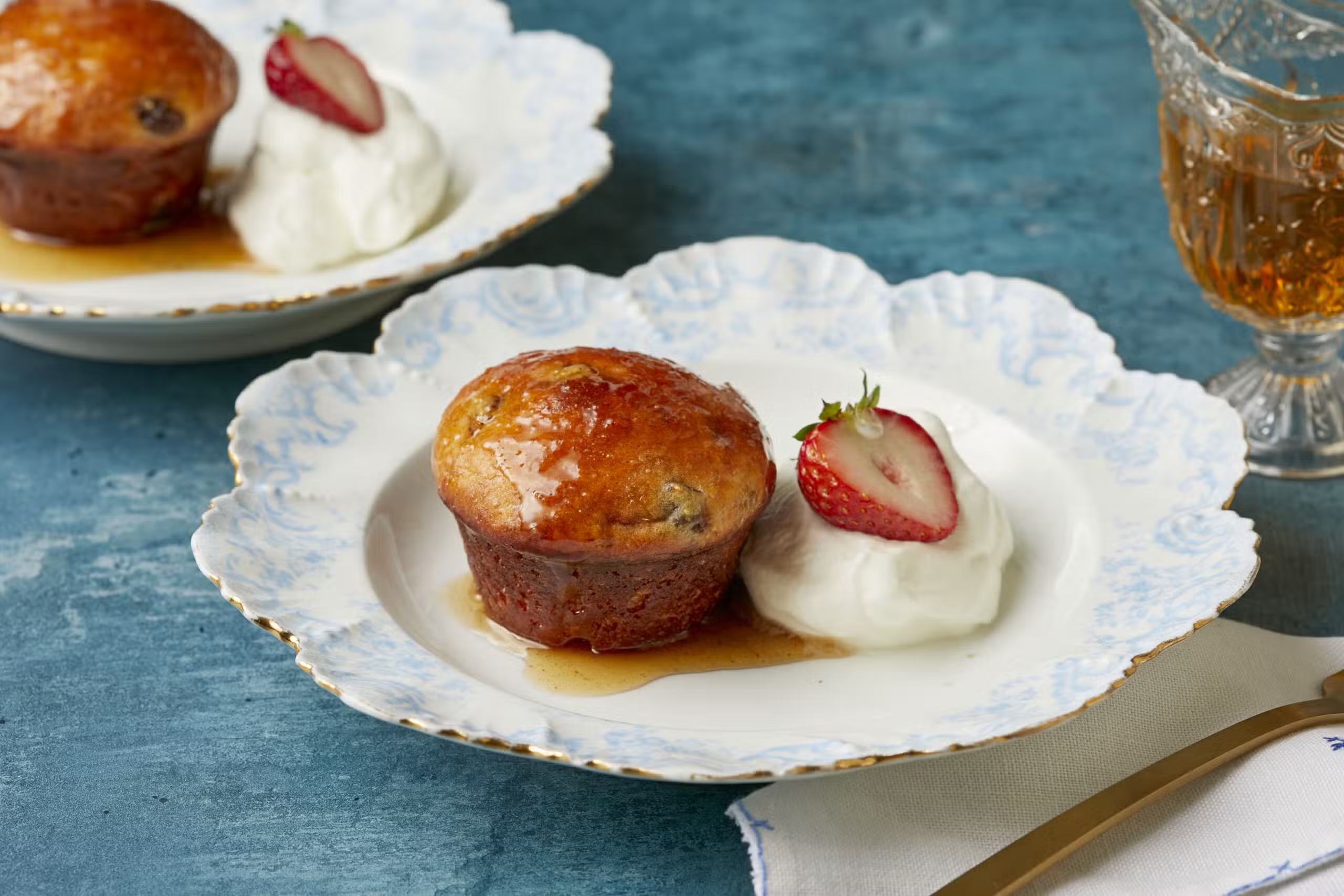
9) Baba au Rhum
Baba au Rhum is a beloved Italian dessert with a rich history. This small yeast cake is soaked in a syrup made with rum, giving it a unique, flavorful punch. The dough is soft and airy, making it a delightful treat.
To make a Baba au Rhum, you start with a simple yeast dough. The dough is mixed with eggs, milk, and flour until it becomes smooth. After it rises, it’s baked until golden brown.
Once baked, the cakes are soaked in a syrup. The syrup is made by heating sugar, water, and lemon peel until it boils. Rum is added at the end, infusing the cakes with its distinctive taste.
Often, Babas are served with a filling of whipped cream or pastry cream. This adds a creamy texture that complements the rum-soaked cake perfectly.
Baba au Rhum is typically made in small, individual servings. They are usually shaped as small cylinders but can vary in size. Some versions of Baba au Rhum are larger, resembling a traditional cake.
When you enjoy a Baba au Rhum, you experience a perfect blend of sweetness, richness, and a hint of alcohol. It’s a treat that showcases the elegance and skill of Italian baking.

10) Pistachio Semifreddo
Pistachio Semifreddo is an Italian dessert that combines sweet and nutty flavors. It’s like a frozen mousse, making it perfect for warm weather.
To make it, you need to line a loaf pan with plastic wrap. This will help you remove the dessert easily later.
Start by grinding pistachios with some sugar in a food processor. This creates a fine mix of nuts and sweetness.
Whip some heavy cream in a chilled bowl until it forms soft peaks. Then, carefully fold the ground pistachios into the whipped cream.
Next, beat egg yolks with sugar over simmering water. Make sure the bowl doesn’t touch the water to avoid cooking the eggs. Once this mixture is fluffy, let it cool.
Incorporate the cooled egg mixture into the whipped cream and pistachio blend. Pour it all into the prepared loaf pan.
Cover the pan with plastic wrap and freeze for at least four hours. This will allow the semifreddo to set properly.
When ready to serve, slice the semifreddo and enjoy its creamy, nutty goodness. It’s a refreshing treat that showcases the delightful flavor of pistachios.
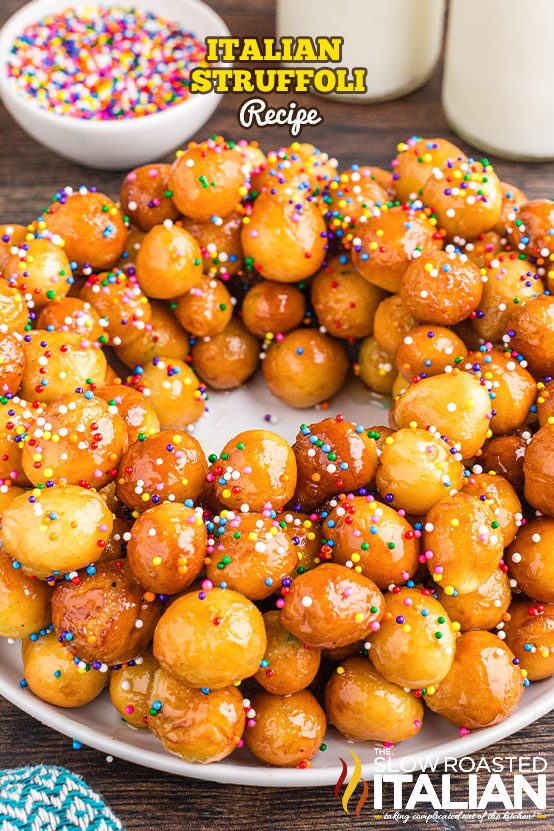
11) Struffoli
Struffoli are bite-sized Italian honey balls that are a popular treat, especially around Christmas. They are small, deep-fried dough balls coated in honey and often adorned with colorful sprinkles.
To make Struffoli, start by mixing flour, baking powder, and a pinch of salt. Add melted butter, sugar, and liquor to the mix. Incorporate eggs one at a time until the dough forms.
Once the dough is ready, roll it into small balls. Heat oil to 375°F (190°C) and fry the dough balls in small batches. It should take about one to two minutes per batch for them to turn golden brown.
After frying, drain the Struffoli on paper towels to remove excess oil.
Melt honey in a large pot and gently toss the fried dough balls in it until they are well-coated.
Transfer the honey-coated balls to a serving plate and sprinkle them with festive decorations. Enjoy this traditional Italian dessert with your family and friends!
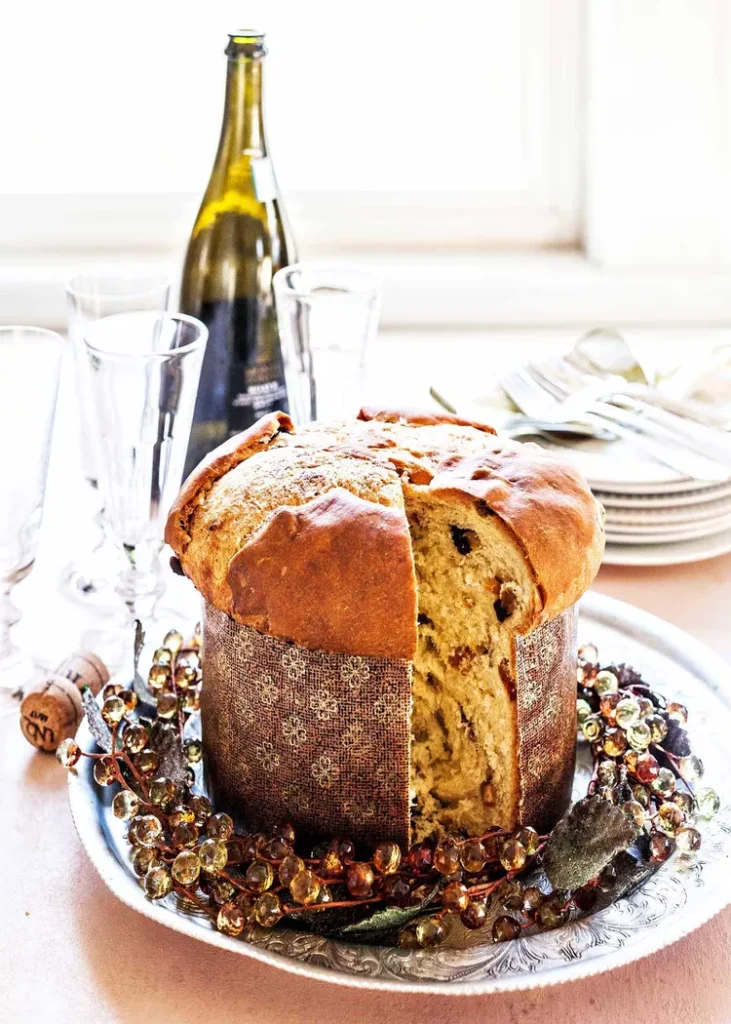
12) Panettone
Panettone is a famous Italian Christmas bread. It originates from Milan and is known for its tall, fluffy structure. The bread is rich and buttery, with a sweet taste.
You will often find dried fruits like raisins and candied orange peel inside. The outer part of the bread is usually golden-brown, creating a beautiful contrast.
Making panettone can be time-consuming. The dough needs several hours to rise. Special molds are used to give it its tall, dome shape.
For a simple twist, you can use panettone in desserts like tiramisu or trifle. It adds a unique flavor to these recipes. Dip it in coffee or layer it with mascarpone for a festive treat.
To make traditional panettone, you need ingredients like flour, butter, sugar, and fresh yeast. The dough is mixed and kneaded, then allowed to rise slowly. This helps achieve its airy texture.
When you eat panettone, you get a combination of flavors—sweet, citrusy, and slightly tangy. It makes a delightful treat during the holiday season.
Panettone is best enjoyed fresh but can also be toasted. Share it with family and friends for a special festive experience.
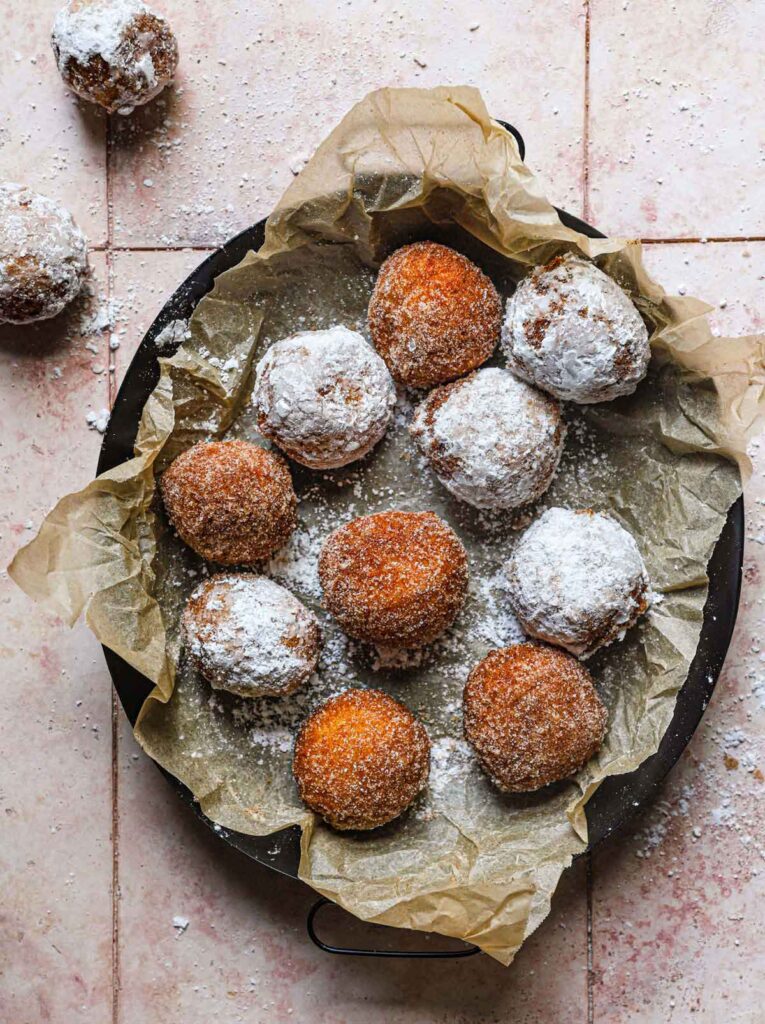
13) Zeppole
Zeppole are delicious Italian donuts often enjoyed during festivals and celebrations. These light and fluffy treats are deep-fried and usually topped with powdered sugar. They can be plain or filled with sweet cream, custard, or even chocolates.
To make zeppole, you start by mixing water, milk, butter, sugar, and salt in a saucepan over medium heat. Once the mixture boils, add flour and stir until smooth.
After the dough cools, add eggs one at a time, mixing thoroughly. Let the dough rise until it doubles in size. This can take about 1 to 1.5 hours.
Heat vegetable oil in a deep pan or fryer to around 375 degrees Fahrenheit. Use a spoon to drop small dough pieces into the hot oil. Fry them until golden, turning to ensure even cooking.
Once cooked, remove the zeppole and let them drain on paper towels. Dust with powdered sugar before serving. Zeppole are best enjoyed fresh and warm, making them a perfect treat for any occasion.
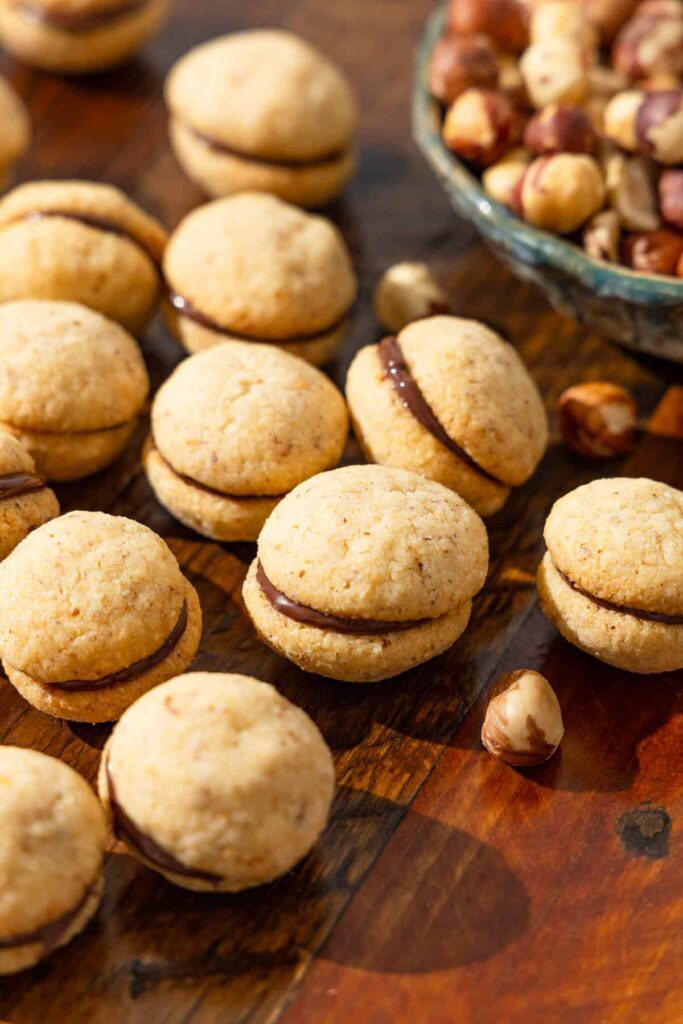
14) Baci di Dama
Baci di Dama, which means “lady’s kisses” in Italian, are delicate cookies from the Piedmont region of Italy. They are known for their simple yet delightful flavor and are made primarily from hazelnut or almond flour.
To make Baci di Dama, start by toasting hazelnut flour or almond flour for 5-7 minutes in a 350°F oven. Toasting the flour brings out a richer flavor. Make sure to let the flour cool before using it.
In a bowl, combine the flour with butter, powdered sugar, salt, and vanilla extract. It’s crucial that the butter is at room temperature to ensure smooth mixing. Beat these ingredients on low speed until they form a dough.
Once you have the dough, shape it into small balls, about 2 teaspoons each. Place them on a baking sheet lined with parchment paper, spacing them about 1 inch apart. Let the dough balls rest in the fridge for an hour before baking.
Preheat your oven to 338°F (170°C) and bake the cookies for about 15-20 minutes until they are lightly golden around the edges. Allow the cookies to cool completely before handling them.
These cookies are usually filled with a layer of melted chocolate. Once cooled, pair two cookies together with chocolate in the middle to form a “kiss.” Enjoy your Baci di Dama with coffee or tea.
Baci di Dama are elegant treats that represent the charm of Italian confectionery.
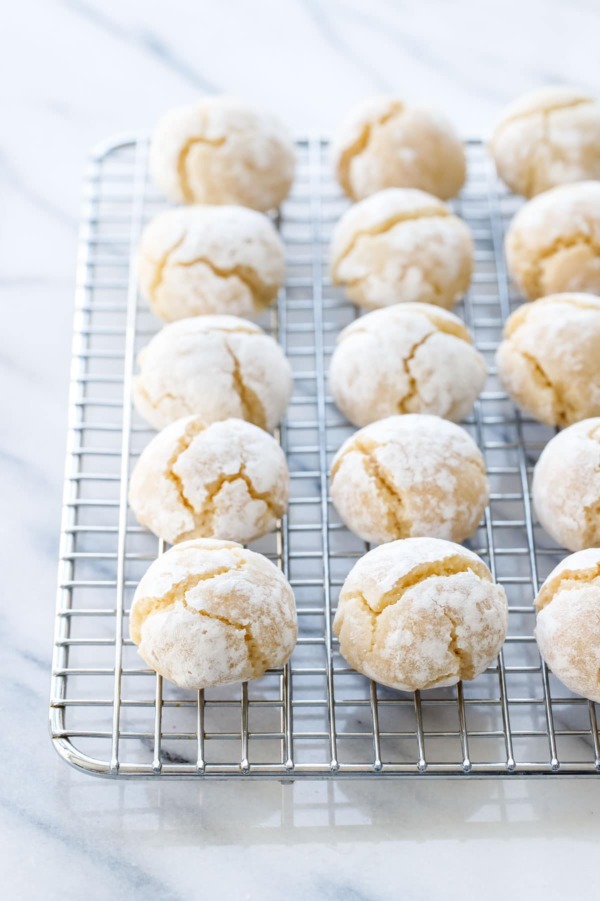
15) Amaretti
Amaretti cookies are classic Italian treats known for their chewy texture and almond flavor.
You start with almond flour and granulated sugar mixed in a bowl. Then, whisk egg whites until they form soft peaks.
After that, you gently fold the almond flour mixture into the egg whites. Add a touch of almond extract to enhance the flavor.
Shape the dough into small balls and place them on a baking sheet lined with parchment paper.
Bake at 350°F until the cookies are slightly golden. This should take around 15-20 minutes.
Amaretti can be enjoyed as a snack or paired with coffee. The rich almond flavor makes them a favorite in many Italian households.
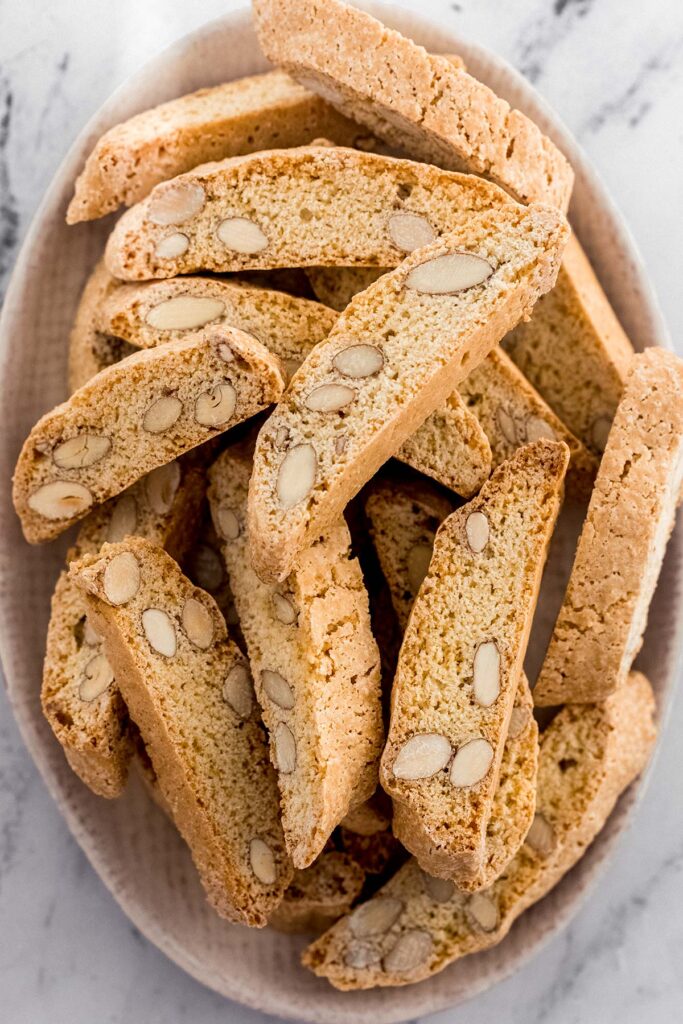
16) Biscotti di Prato
Biscotti di Prato, also known as cantucci, are famous Italian almond cookies. These cookies originate from the city of Prato in Tuscany. They are twice-baked, making them crunchy and perfect for dipping in coffee or dessert wine.
To make Biscotti di Prato, start by toasting whole almonds until they are golden. Next, combine flour, sugar, eggs, and baking powder to form a dough. Mix in the almonds and shape the dough into logs.
Bake the dough logs at 350°F (180°C) until they are slightly puffed up. Once they cool a bit, slice the logs into thick pieces. Bake the slices again until they are crisp and golden.
These cookies often include a hint of vanilla or citrus zest, adding extra flavor. You can personalize them by adding dried fruits or chocolate chips. Enjoy these delightful cookies as part of your Italian dessert spread.
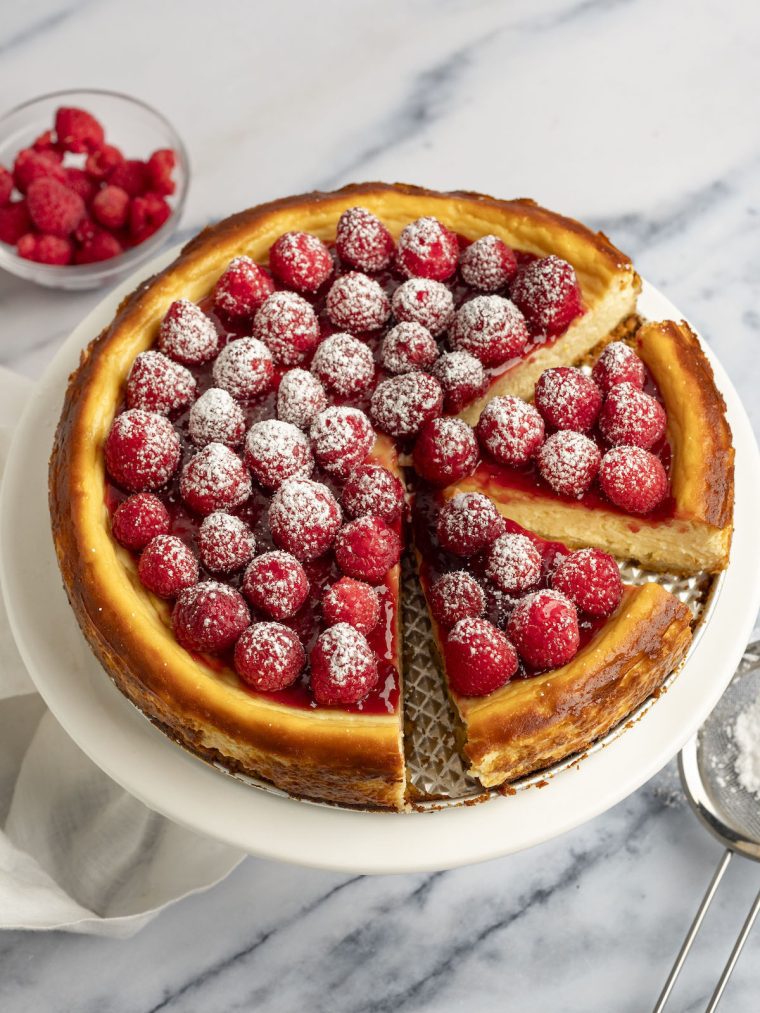
17) Ricotta Cheesecake
Ricotta cheesecake is a classic Italian dessert that offers a lighter texture compared to traditional cheesecakes. The key ingredient is ricotta cheese, which gives the cake a creamy and fluffy consistency.
To make ricotta cheesecake, you’ll need ricotta cheese, eggs, sugar, vanilla extract, and lemon zest. These ingredients are mixed together until smooth and creamy.
Preheat your oven to 350°F (175°C). Prepare a springform pan by greasing it and lining the bottom with parchment paper to prevent sticking.
Pour the batter into the pan and smooth the top. Bake for about 60 minutes or until the cake is set and slightly golden.
Allow the cheesecake to cool before serving. It’s often garnished with powdered sugar or fresh berries.
This cheesecake is perfect for any occasion, providing a delicious and elegant finish to your meal.
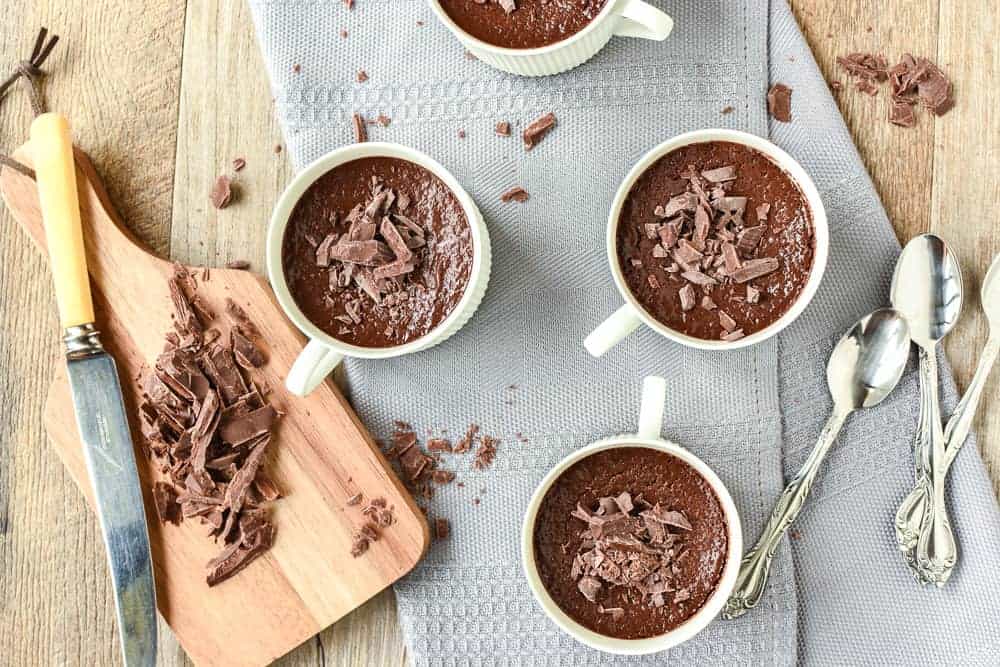
18) Budino al Cioccolato
Budino al cioccolato is a traditional Italian chocolate pudding. It has a rich, creamy texture that makes it a favorite among chocolate lovers. This dessert is perfect for those who enjoy a smooth, intense chocolate flavor.
To make budino al cioccolato, you start by melting butter over low heat. You then add granulated sugar, stirring until it blends well with the butter. Chopped dark chocolate is added next, melting into the mixture to create a thick, chocolatey paste.
In another pan, heat milk until it reaches a boil. Turn off the heat and set it aside. Gradually mix the warm milk into the chocolate mixture. This helps create a smooth and consistent pudding.
Once the mixture is well-blended, pour it into ramekins. Place these ramekins in a baking pan filled halfway with boiling water. Bake for 35-40 minutes until the edges are set but the center remains slightly wobbly.
Allow the budino to cool before serving. You can serve it warm or at room temperature. Some recipes suggest adding a dollop of whipped cream or a sprinkle of cocoa powder on top for extra indulgence.
This dessert is a delightful way to enjoy the deep, rich flavors of Italian chocolate. It’s sure to impress your guests and become a favorite in your dessert repertoire.
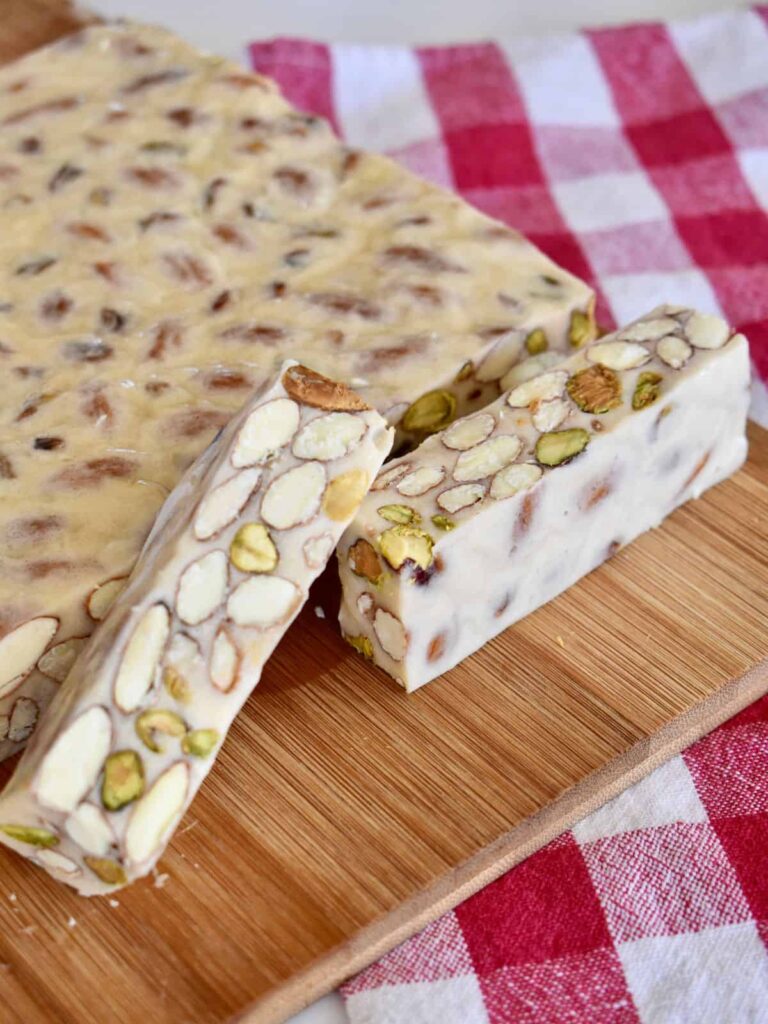
19) Torrone
Torrone is a beloved Italian nougat candy. It’s made with honey, sugar, and egg whites, and often includes nuts like almonds or hazelnuts. The mixture is cooked until thick and then spread into a mold lined with wafer paper.
To make torrone at home, start by toasting the nuts in the oven. While the nuts toast, heat sugar and water in a saucepan and another saucepan for honey and vanilla. The key is to cook these mixtures to specific temperatures.
Once both mixtures reach the right temperatures, combine them with whipped egg whites. Fold in the toasted nuts. Pour the mixture onto a sheet of wafer paper in a pan, then cover it with another sheet. Smooth it out with a spatula.
Torrone can be soft or hard, depending on how long you cook the syrup and honey. It’s a festive treat in Italy, often enjoyed during holidays like Christmas or Easter. There are many regional varieties, each with its own twist.
Experimenting with different nuts or adding flavorings like citrus zest can make your torrone unique. Enjoy this classic Italian dessert with family and friends to savor a piece of Italian tradition.
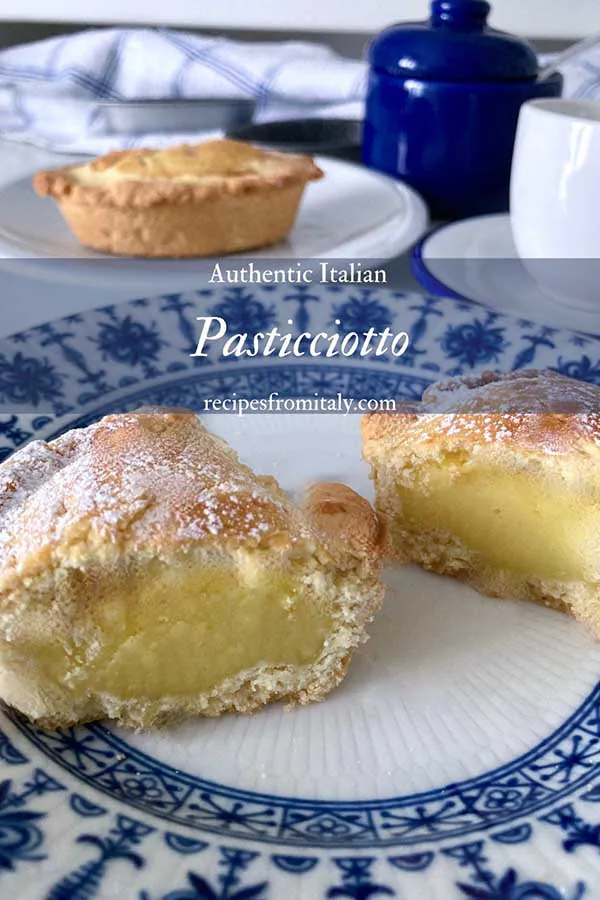
20) Pasticciotto
Pasticciotto is a cream-filled Italian pastry from the region of Puglia. These small tarts are known for their rich, creamy filling and flaky crust.
To make pasticciotto, you start by preparing the dough. Beat butter and sugar until light and airy. Add vanilla, an egg, and an egg yolk, then mix until smooth.
Next, roll out the dough and line small muffin molds with it. Fill each mold with a generous amount of custard. Many recipes call for a simple custard made from egg yolks, sugar, and milk.
Cover the filled molds with another layer of dough. Press the edges together to seal.
Chill the pastries in the fridge for at least 30 minutes. This helps the dough firm up and makes it easier to bake.
When ready to bake, preheat your oven to 180°C (350°F). Brush the tops with an egg yolk and milk mixture for a glossy finish. Bake until golden brown, usually about 30 minutes.
Let them cool slightly before serving. The contrast between the warm, creamy filling and the crisp, buttery crust makes pasticciotto a delightful treat.

21) Gianduja
Gianduja is a delicious Italian chocolate hazelnut spread. It originated in Turin, Italy, in the mid-1800s. Created to extend the amount of chocolate available, it features a high percentage of hazelnut paste, around 30%.
The spread came before Nutella and is known for its smooth, creamy texture. To make Gianduja, you need to toast hazelnuts, remove their skins, and grind them into a fine paste.
Chocolatiers Michele Prochet and Isidore Caffarel perfected the recipe in 1852 by roasting the nuts gently. This technique enhances the flavor, making the mix richer and more delightful.
Gianduja is often used in various sweets, such as chocolates, spreads, and even baked goods. Its unique taste comes from the blend of quality hazelnuts and fine chocolate.
You can easily enjoy this Italian treat on bread, in pastries, or directly by the spoonful. Many Italian dessert recipes incorporate Gianduja for its deep, nutty flavor and smooth consistency.
History of Italian Desserts
Italian desserts have a rich history that intertwines with cultural traditions and regional differences. From the Sicilian cannoli to the Venetian tiramisu, each sweet treat reflects the heritage of its area.
Origins and Cultural Significance
Many Italian desserts trace their origins to ancient times. For example, cannoli date back to the Arab rule in Sicily during the 9th century. The name “cannoli” comes from the Latin word canna, referring to its reed-like shape.
The ingredients often used in traditional recipes, such as ricotta cheese, eggs, sugar, and flour, are simple yet versatile. They reveal a lot about Italy’s agricultural history. Desserts were often created to celebrate festivals, holidays, and religious events, making them integral to Italian culture.
Regional Variations
Every region in Italy has its own unique take on desserts. In Sicily, you’ll find cannoli filled with rich, sheep’s milk ricotta. Meanwhile, in Rome, bakeries serve creamy, decadent cheesecakes made with cream cheese.
Veneto is famous for its tiramisu, a dessert that layers coffee-soaked ladyfingers with mascarpone cheese. In northern Italy, Piemontese chocolate treats are popular thanks to the high-quality cocoa beans available in the region.
These variations not only highlight the diverse ingredients available across Italy but also reflect the different cultural influences and traditions that shape each region’s approach to dessert-making.
Common Ingredients in Italian Desserts
Italian desserts use a variety of traditional ingredients along with some modern twists. Below are some details about key components you’ll find in many classic and contemporary recipes.
Traditional Ingredients
Mascarpone: This creamy cheese is a staple in Italian desserts like Tiramisu. It adds a rich, smooth texture.
Espresso: You often find espresso in desserts, especially ones like Tiramisu and some cakes, giving a deep coffee flavor.
Ladyfingers: These light and crisp biscuits are essential for Tiramisu. They soak up espresso and other liquids well.
Ricotta Cheese: Used in many desserts such as cannoli and ricotta cake. It provides a mild, slightly sweet flavor.
Lemon: Frequently used for zest and juice, lemon adds a fresh, tangy taste to cakes and cookies.
Almonds: Common in biscotti and other cookies, almonds give both flavor and texture.
Honey: Used as a natural sweetener in many traditional sweets.
Pine Nuts: Often found in cakes, they add a unique taste and crunch.
Modern Twists
Dark Rum: Some modern recipes add dark rum to enhance the flavors of espresso and chocolate, especially in Tiramisu.
Cranberries: Used in newer versions of biscotti and cakes, cranberries give a tart contrast to sweet flavors.
Glaceéd Citron: This candied citrus peel is more popular in contemporary holiday desserts like Panettone.
Berry Purees: Fresh berry purees are sometimes added to panna cotta and other creamy desserts for an extra layer of flavor.
Nutella: This hazelnut spread is a favorite modern ingredient for adding rich, chocolatey flavor to various sweets.
Gelato: This frozen delight frequently uses innovative flavors like pistachio, hazelnut, and even balsamic strawberry.
Amaretto: This almond-flavored liqueur is used in updated recipes to give an extra depth of taste.
Techniques for Making Italian Desserts
When making Italian desserts, it’s essential to know both baking and no-bake techniques. You’ll need different methods to create desserts like tiramisu or panna cotta.
Baking Techniques
To make baked Italian desserts, you often start with precise measurements. Ingredients need to be measured accurately to ensure the right texture and flavor. Baking is a science, so small deviations can make a big difference.
Pies and Tarts: Desserts like crostata require a well-made dough. Roll it out to an even thickness to ensure it bakes uniformly. Use a lattice pattern for a traditional look and bake until golden brown.
Cakes: For desserts like torta di ricotta, be sure to cream the sugar and butter together until light and fluffy. This helps incorporate air and gives the cake a good rise. Checking doneness with a toothpick also helps ensure it’s baked through.
Cookies: Biscotti are twice-baked cookies. First, you bake the dough in logs, then slice and bake again to achieve their characteristic crunch. Be patient and let them cool slightly before cutting to prevent crumbling.
No-Bake Desserts
No-bake Italian desserts rely more on assembly and chilling rather than time in the oven. These techniques often involve layering and setting ingredients.
Tiramisu: This involves layering espresso-soaked ladyfingers with a mascarpone mixture. The key is to use fresh ingredients and let it chill long enough for the flavors to meld together.
Panna Cotta: This creamy dessert sets in the fridge. You’ll need to dissolve gelatin in heated milk and cream, then pour into molds. Timing is critical; allow it to cool slightly before chilling to avoid a skin forming on top.
Gelato: Making gelato involves churning the mixture to prevent ice crystal formation, resulting in a smooth texture. Use high-quality ingredients and follow precise timing when churning and freezing.
Using these techniques, you can master the art of creating delicious Italian desserts, whether baking is involved or not.








